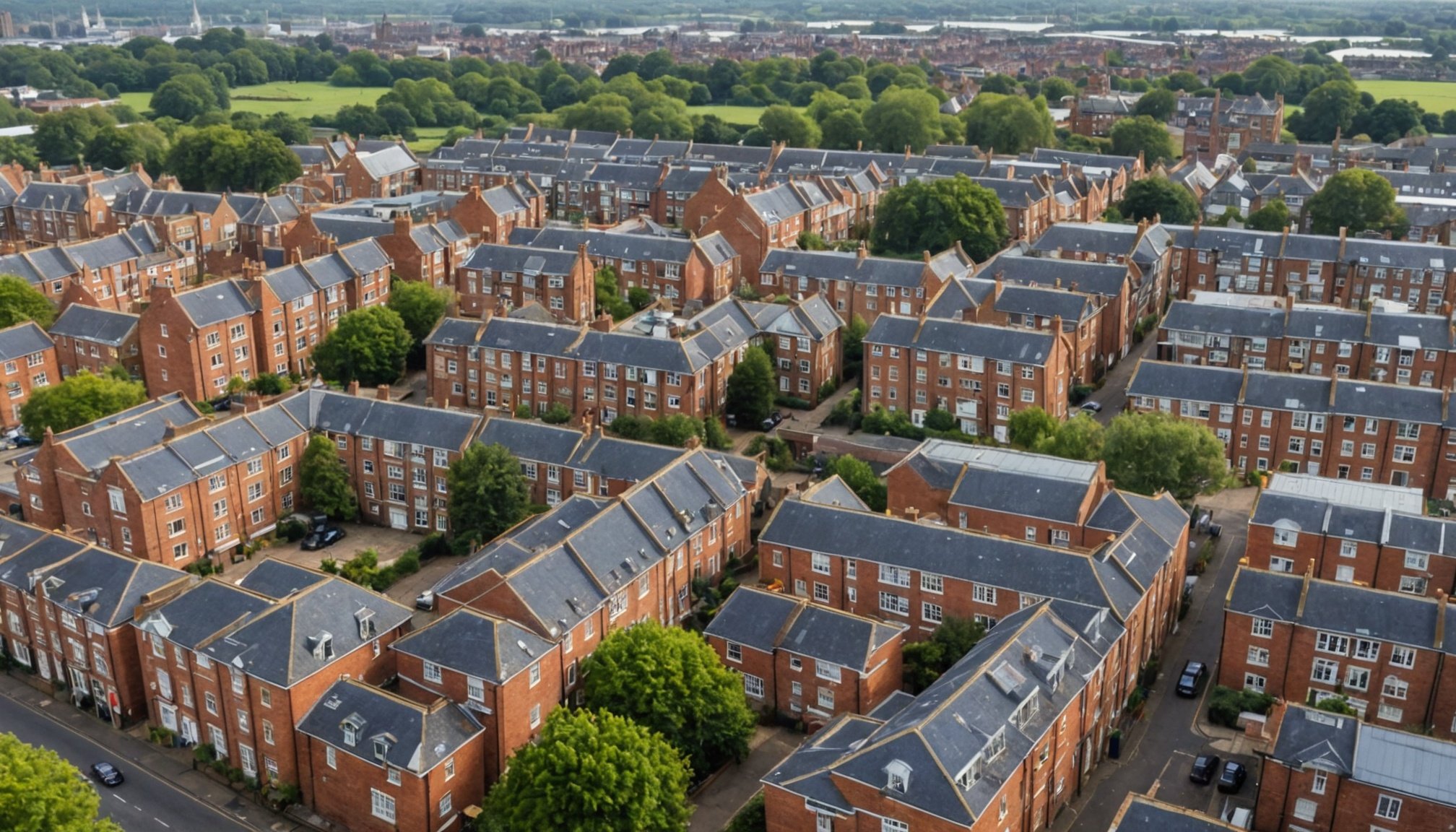In recent years, the UK property market has seen a surge in interest from both domestic and foreign investors. With economic conditions evolving and urban landscapes changing, identifying up-and-coming neighborhoods is crucial for anyone looking to make a sound investment. But how can you spot these areas before they explode in value? This article will guide you through the factors to consider when searching for neighborhoods with high growth potential, focusing particularly on the London area but also applicable to other cities. We’ll discuss local demand, price trends, and the significance of rental opportunities that make certain areas attractive for investment.
Understanding Market Trends and Demand
To identify high-potential neighborhoods, you must first grasp the overall market trends. The property market can be unpredictable, driven by changes in the economy, local demand, and broader socio-political factors. In London, for example, the demand for property continues to rise, especially in areas that are rapidly developing.
Additional reading : How can UK landlords minimize void periods in their rental properties?
Investors should pay attention to emerging neighborhoods that show signs of growth. Look for areas where the average property price is lower than the city average but is experiencing an upward trend. These neighborhoods often attract young professionals and families looking for affordable housing, thereby increasing demand and potential rental income.
Additionally, investors should monitor government plans for infrastructure development, such as new transport links or commercial projects. These improvements often signal that an area will see increased property values over time. For instance, the expansion of the London Underground or new rail connections to the suburbs can drastically increase an area’s appeal.
Also read : How can technology be leveraged to streamline property management for landlords in the UK?
It’s also wise to evaluate socio-economic factors in emerging areas. High levels of employment and diverse job opportunities can enhance local demand for property. Investors should research the demographics of a neighborhood, looking for a population that is growing and has the potential for sustained demand. Areas with an influx of young professionals often thrive, as they seek rental properties that align with their lifestyles. By keeping a close eye on these market trends, you will be better positioned to spot neighborhoods with significant growth potential.
Analyzing Rental Yields and Investment Opportunities
When assessing neighborhoods for their investment potential, rental yields play a critical role. Investors should analyze the rental market closely to determine the profitability of their investment. High rental yields can often indicate that an area is desirable for tenants, suggesting a stable demand for rental properties.
In London, neighborhoods that were once considered undesirable can suddenly become attractive if they offer competitive rental prices compared to the surrounding areas. For example, areas that are undergoing regeneration or have new amenities can draw renters who are priced out of more established neighborhoods. Investors can take advantage of this situation by acquiring properties at lower prices, then leasing them out for a higher return on investment.
Additionally, keep an eye on the average rental prices in a given area. If rental prices are increasing faster than property prices, this can indicate a strong local demand. Such scenarios often highlight neighborhoods poised for continued growth. Utilize online property platforms to gather data on rental trends, vacancy rates, and the types of properties in demand.
Moreover, investors should consider demographic shifts, such as increased student populations from nearby universities or the influx of young professionals. These groups often require rental housing, which can significantly impact rental yields. This information is vital when evaluating potential opportunities in up-and-coming neighborhoods. By focusing on these aspects, investors can make informed decisions that align with their financial goals.
The Role of Local Amenities and Infrastructure
Local amenities significantly impact property desirability. Neighborhoods with easy access to schools, parks, shopping centers, and healthcare facilities generally attract more renters and buyers. As an investor, you should evaluate how well a neighborhood is equipped with necessary amenities and services. An area that is developing new parks or community centers may experience a surge in demand, making it an attractive option for investment.
Furthermore, consider the role of transportation. Areas with excellent transport links to London and other major cities are often seen as more desirable. The convenience of commuting can enhance property values and rental prices. Investors should look for neighborhoods near new or improved transport systems, as these can lead to market growth.
Additionally, the presence of local businesses can enhance a neighborhood’s appeal. Emerging areas with new cafes, shops, and restaurants create a vibrant community that draws in residents. As these businesses flourish, they create jobs and increase local spending power, further boosting demand for housing.
Monitoring plans for future development is crucial. If a council announces new schools, transport links, or commercial projects, these can become significant factors in your decision-making process. Understanding the long-term vision for an area helps you anticipate its potential growth trajectory. Thus, investors should pay attention to urban planning proposals and community feedback to gauge the future landscape of a neighborhood.
Examining Economic Indicators and Local Development
Economic indicators are another critical aspect to consider when identifying high-potential neighborhoods. Investors should stay informed about the local economy’s health, including employment rates, average income levels, and business growth. A thriving local economy often correlates with increased property demand, making it a pivotal factor in your investment strategy.
In London, neighborhoods with low unemployment rates and increasing average incomes tend to attract more investors. As the local population’s purchasing power grows, so does the demand for housing. Investors should scrutinize the local job market, looking at emerging industries and major employers relocating to the area. This can signal a sustained increase in demand for both rental and owner-occupied properties.
Additionally, you should examine the flow of people in and out of the city. Areas that are gaining residents may experience price increases, while those losing population may see stagnation or decline. Understanding these trends can help you avoid investing in neighborhoods that may not yield the expected returns.
Moreover, keep track of government policies and incentives for housing development. Initiatives aimed at boosting housing supply can dramatically influence local property prices. For instance, investors should be aware of housing grants, tax incentives, or plans for new public housing projects. These can lead to an influx of new residents, thereby increasing overall demand for housing. By analyzing these economic indicators and local development strategies, you can position yourself to capitalize on neighborhoods that offer attractive investment opportunities.
Identifying up-and-coming neighborhoods in the UK requires a blend of research, market knowledge, and strategic thinking. By understanding local market trends, analyzing rental yields, evaluating local amenities, and keeping an eye on economic indicators, you can make informed decisions that maximize your investment potential. As the demand for property continues to grow, especially in major cities like London, the opportunities for savvy investors are abundant. Keep your finger on the pulse of emerging areas, and you will be well-equipped to spot the next neighborhood set for a surge in growth.











